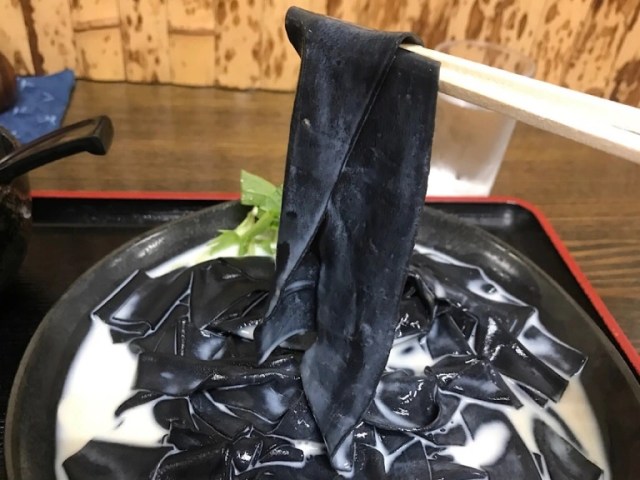
We head to an udon restaurant where they do things very differently.
Usually, the quickest way to differentiate udon from other types of Japanese noodles is visually. Udon noodles tend to be round, thick, and white, making them look different from ramen (thinner and yellow) or soba (grayish brown or green and flat).
▼ A bowl of udon
So when we heard about a restaurant where the udon is not only flat, but pitch-black too, we knew where we were going for lunch: the town of Kiryu, in Gunma Prefecture.
Stepping off the Tobu Kiryu Line at Shin-kiryu Station, we still had a bit of a ways to go to get to Tanumaya, the restaurant serving black udon. Luckily for us there are free-to-use rental bikes right outside the station, so we hopped on one and started pedaling.
It was still before noon, and the town was quiet and peaceful as we rode down the street, admiring the views of the nearby mountains and river.
On foot, it’s about a 30-minute walk from the station to the restaurant, but taking the bike meant we arrived a little before its 11:30 a.m. opening time.
Inside, the interior has a charmingly rustic feel, and while it’s not a particularly big restaurant, the tables and counter seats are laid out in a way that keeps the cozy atmosphere from feeling cramped.
There’s a menu, but we didn’t have to read it to know what we wanted: the Kuro-obi, or “Black Belt” udon, for 950 yen (US$6.75). Our server told us we had our choice of hot or cold broth, and since there was still plenty of lingering summer heat and humidity in the air, we opted for cold.
As we waited for our food, the restaurant started to fill up with other customers, who seemed to be locals and regular diners at Tanumaya. Each and every one of them asked for “curry udon,” making us feel like maybe we were going to be missing out on the real star of the menu, but honestly, there was no way we were going to skip the Black Belt on our first visit.
After a few minutes, our server returned with our food, and, well…
…there’s absolutely no way you can accuse the Black Belt’s name from being misleading!
The noodles get their striking color from edible bamboo charcoal that’s kneaded into the dough (like with the black hamburgers that sometimes pop up in Japan). Making the visuals even more striking is that the broth is soy milk-based, providing not only an intense contrast but also adding a shimmering, glistening effect as you raise the noodles.
Speaking of picking up a mouthful of noodles with your chopsticks, the Black Belt udon is incredibly long. Ordinarily, you’re supposed to slurp Japanese noodles, but the combination of length and width here actually makes it a little easier to fold the noodles around your chopsticks a few times before taking a bite.
Because of how captivating they look, it wasn’t until a few moments had passed that we realized…
…the Black Belt udon comes with a side of curry!
Considering how all the regulars were ordering curry udon, this was a major relief. Tanumaya describes it as a “roasted spice keema curry,” and we’d been provided with an iced side dish so we could enjoy it hot or cold.
The curry combined beautifully with the rich, ever so slightly sweet soy milk broth, with the spicy notes coming on strong but coming to a mild finish as we chewed. The noodles are pleasantly firm, and if you’ve never eaten bamboo charcoal before, don’t worry, as there isn’t even a hint of earthy bitterness to the taste or aroma of the Black Belt udon.
If the color is still too much for you, Tanumaya serves regular-looking white udon too, but for us, in terms of looks, flavor, and fillingness, we came away completely satisfied, though also craving some black ice cream from Ikea Japan for dessert.
Restaurant information
Tanumaya / 田沼屋
Address: Gunma-ken, Kiryu-shi, Higashi 6-7-11
Open 1130 a.m.-2 p.m., 5 p.m.-7 p.m.
Closed Mondays
Website
Photos ©SoraNews24
● Want to hear about SoraNews24’s latest articles as soon as they’re published? Follow us on Facebook and Twitter!
[ Read in Japanese ]

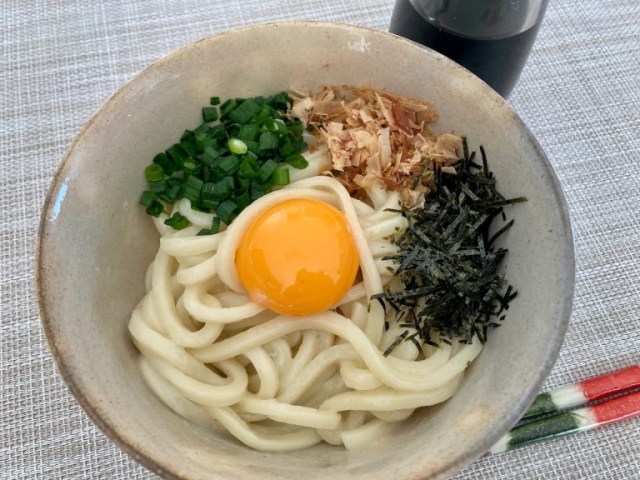
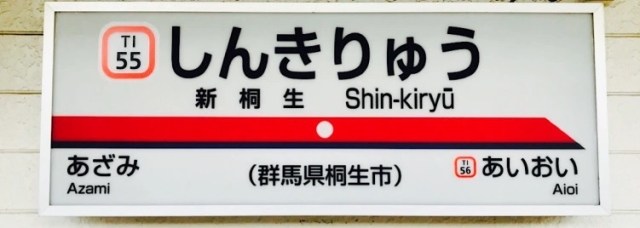

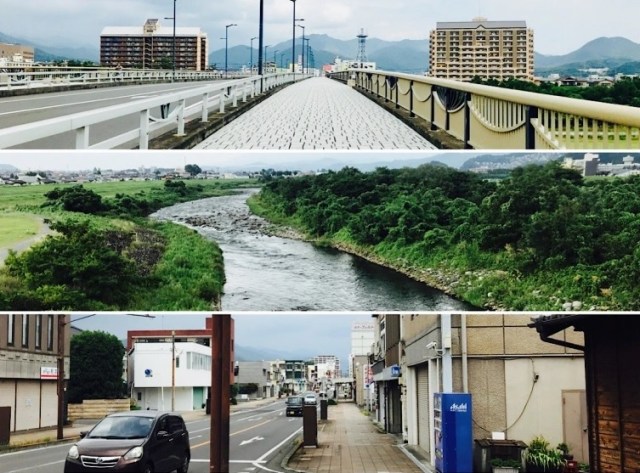
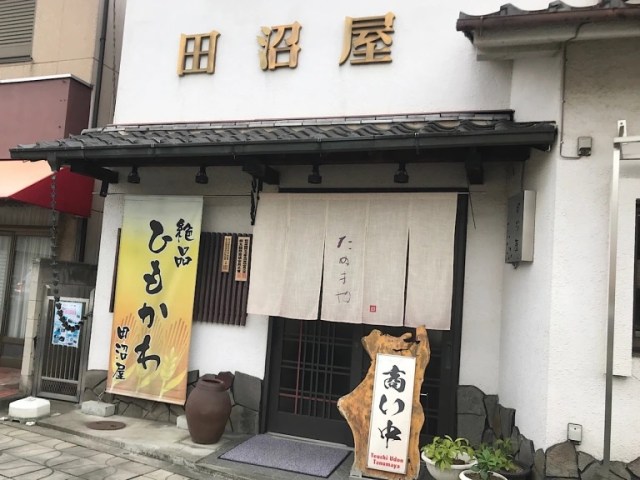
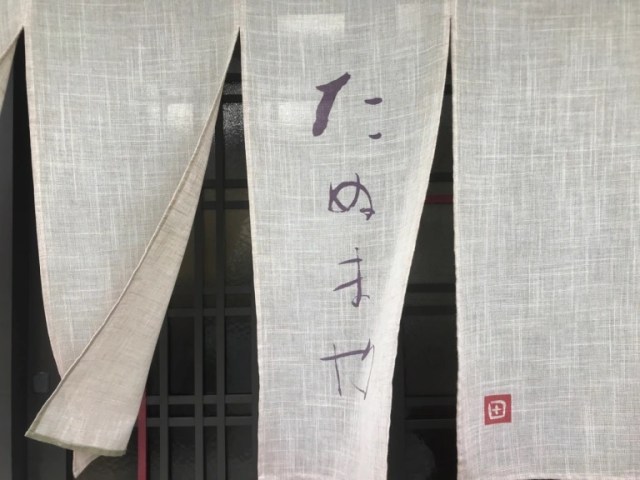
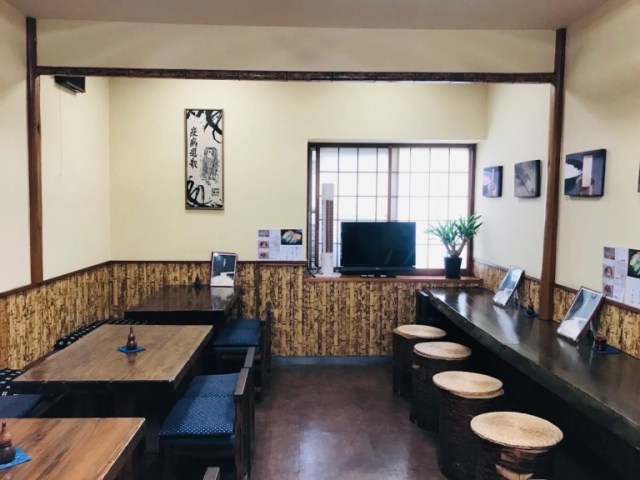
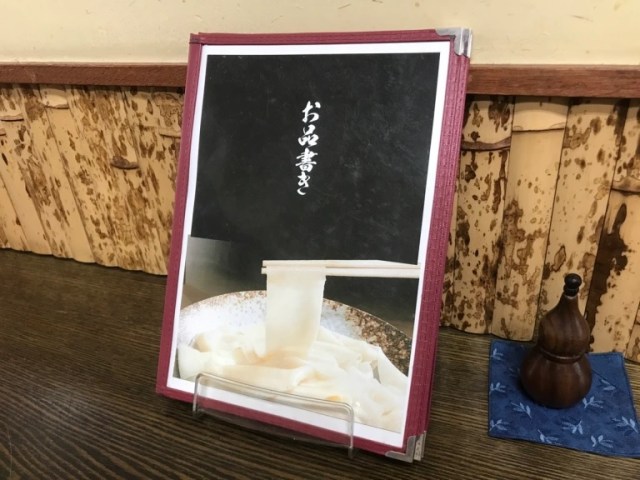
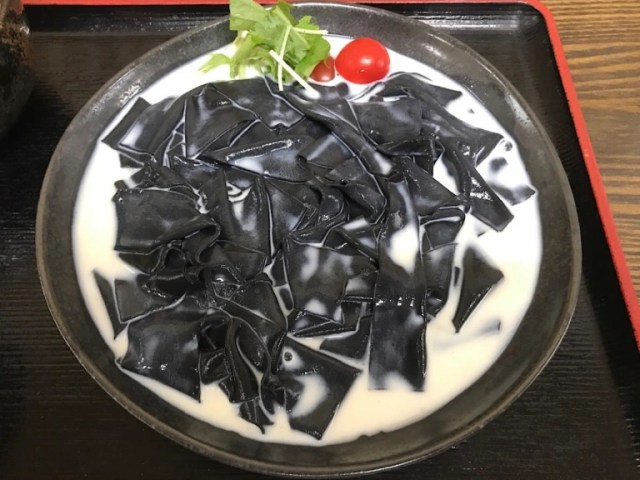
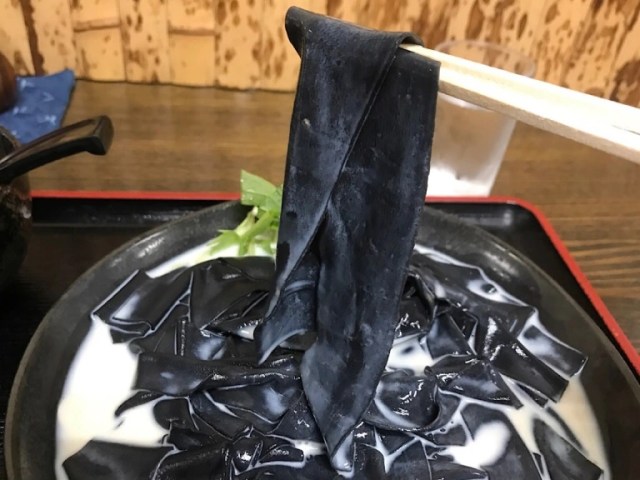
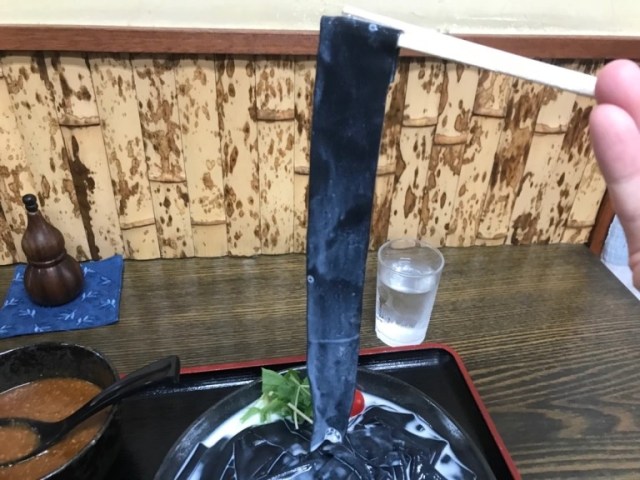
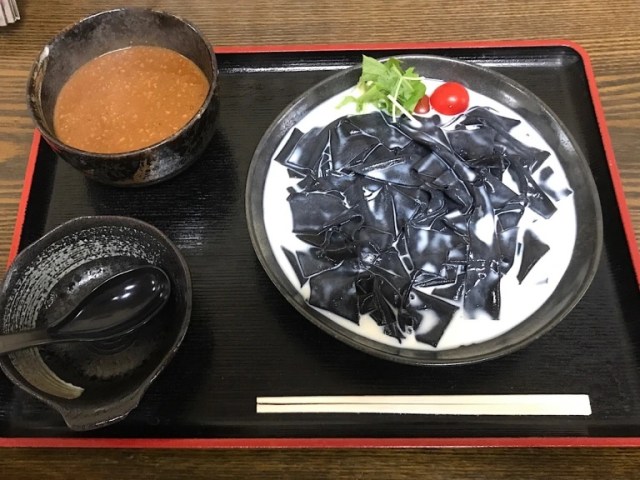
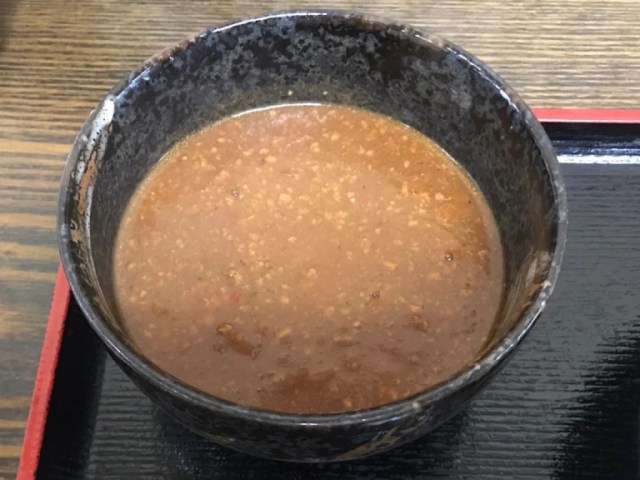
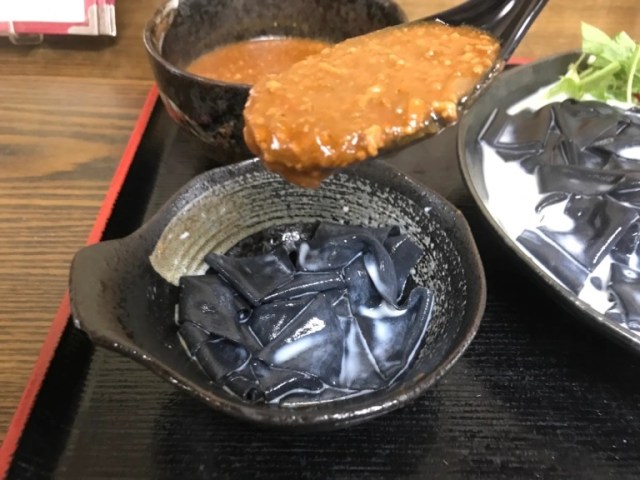
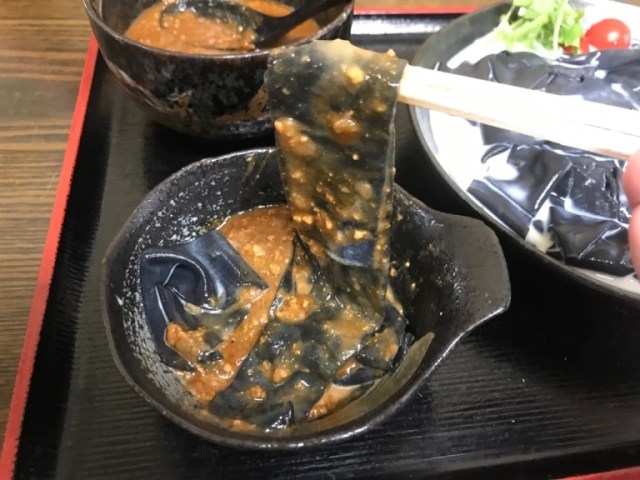
 Japanese restaurant serves noodles that you fold and eat【Taste test】
Japanese restaurant serves noodles that you fold and eat【Taste test】 Popcorn shrimp udon, as in noodles with popcorn and shrimp, now on the menu in Tokyo【Taste test】
Popcorn shrimp udon, as in noodles with popcorn and shrimp, now on the menu in Tokyo【Taste test】 All-Noodle Artisan Marugame udon restaurant operating in Tokyo, only 30 percent pass test
All-Noodle Artisan Marugame udon restaurant operating in Tokyo, only 30 percent pass test Noodle joint in Harajuku becomes a hot topic with foreigners on Reddit, but is it any good?
Noodle joint in Harajuku becomes a hot topic with foreigners on Reddit, but is it any good? Express your love this Valentine’s season…with udon noodles topped with a humongous heart!
Express your love this Valentine’s season…with udon noodles topped with a humongous heart! How to order snacks on a Shinkansen bullet train in Japan
How to order snacks on a Shinkansen bullet train in Japan Burger King Japan suddenly adds Dr. Pepper and Dr. Pepper floats to its menu nationwide
Burger King Japan suddenly adds Dr. Pepper and Dr. Pepper floats to its menu nationwide New Nintendo Lego kit is a beautiful piece of moving pixel art of Mario and Yoshi【Photos】
New Nintendo Lego kit is a beautiful piece of moving pixel art of Mario and Yoshi【Photos】 Hello, cosmetics! Clinique teams up with Hello Kitty this summer for first-time collaboration
Hello, cosmetics! Clinique teams up with Hello Kitty this summer for first-time collaboration Demon Slayer: Kimetsu no Yaiba gets new roller coaster attractions and food at Universal Studios Japan
Demon Slayer: Kimetsu no Yaiba gets new roller coaster attractions and food at Universal Studios Japan 11 different ways to say “father” in Japanese
11 different ways to say “father” in Japanese Kyoto tea merchant’s matcha parfait ice cream bars: The desserts we’ve been waiting 187 years for
Kyoto tea merchant’s matcha parfait ice cream bars: The desserts we’ve been waiting 187 years for East meets West in the Pacific-centered version of the world map
East meets West in the Pacific-centered version of the world map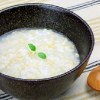 What do you eat when you catch a cold? We asked 11 of our Japanese reporters
What do you eat when you catch a cold? We asked 11 of our Japanese reporters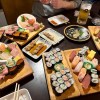 Shinjuku izakaya’s all-you-can-eat-and-drink plan is one of Tokyo’s best secret cheap eats
Shinjuku izakaya’s all-you-can-eat-and-drink plan is one of Tokyo’s best secret cheap eats Nintendo history you can feel – Super NES, N64, and GameCube controllers become capsule toys
Nintendo history you can feel – Super NES, N64, and GameCube controllers become capsule toys “The most Delicious Cup Noodle in history” – Japan’s French Cup Noodle wins our heart【Taste test】
“The most Delicious Cup Noodle in history” – Japan’s French Cup Noodle wins our heart【Taste test】 Starbucks releases a cute Frappuccino and Unicorn Cake…but not in Japan
Starbucks releases a cute Frappuccino and Unicorn Cake…but not in Japan Kyoto Tower mascot termination reveals dark side behind cute Japanese characters
Kyoto Tower mascot termination reveals dark side behind cute Japanese characters McDonald’s Japan’s Soft Twist Tower: A phantom ice cream only sold at select branches
McDonald’s Japan’s Soft Twist Tower: A phantom ice cream only sold at select branches Yabai Ramen: What makes this Japanese ramen so dangerous?
Yabai Ramen: What makes this Japanese ramen so dangerous? Finally! Nintendo Japan expands Switch 8-bit controller sales to everybody, Online member or not
Finally! Nintendo Japan expands Switch 8-bit controller sales to everybody, Online member or not Japanese government wants to build luxury resorts in all national parks for foreign tourists
Japanese government wants to build luxury resorts in all national parks for foreign tourists To combat declining birth rate, Japan to begin offering “Breeding Visas” to foreigners
To combat declining birth rate, Japan to begin offering “Breeding Visas” to foreigners 10 things you should buy at 7-Eleven in Japan
10 things you should buy at 7-Eleven in Japan Studio Ghibli releases anime heroine cosplay dresses that are super comfy to wear
Studio Ghibli releases anime heroine cosplay dresses that are super comfy to wear Woman charged for driving suitcase without a license in Osaka
Woman charged for driving suitcase without a license in Osaka Studio Ghibli unveils My Neighbour Totoro miniature house model
Studio Ghibli unveils My Neighbour Totoro miniature house model Kyoto experiencing problems with foreign tourists not paying for bus fares, but not on purpose
Kyoto experiencing problems with foreign tourists not paying for bus fares, but not on purpose Fighting mild hunger with a Japanese soda that turns into jelly in the stomach【Taste test】
Fighting mild hunger with a Japanese soda that turns into jelly in the stomach【Taste test】 Studio Ghibli’s Howl’s Moving Castle tapestry unveiled in Japan for first time
Studio Ghibli’s Howl’s Moving Castle tapestry unveiled in Japan for first time McDonald’s new Happy Meals offer up cute and practical Sanrio lifestyle goods
McDonald’s new Happy Meals offer up cute and practical Sanrio lifestyle goods Sales of Japan’s most convenient train ticket/shopping payment cards suspended indefinitely
Sales of Japan’s most convenient train ticket/shopping payment cards suspended indefinitely Sold-out Studio Ghibli desktop humidifiers are back so Totoro can help you through the dry season
Sold-out Studio Ghibli desktop humidifiers are back so Totoro can help you through the dry season Japanese government to make first change to romanization spelling rules since the 1950s
Japanese government to make first change to romanization spelling rules since the 1950s Foreigner’s request for help in Tokyo makes us sad for the state of society
Foreigner’s request for help in Tokyo makes us sad for the state of society Ghibli founders Toshio Suzuki and Hayao Miyazaki contribute to Japanese whisky Totoro label design
Ghibli founders Toshio Suzuki and Hayao Miyazaki contribute to Japanese whisky Totoro label design Doraemon found buried at sea as scene from 1993 anime becomes real life【Photos】
Doraemon found buried at sea as scene from 1993 anime becomes real life【Photos】 Tokyo’s most famous Starbucks is closed
Tokyo’s most famous Starbucks is closed Princesses, fruits, and blacksmiths: Study reveals the 30 most unusual family names in Japan
Princesses, fruits, and blacksmiths: Study reveals the 30 most unusual family names in Japan The Japan-exclusive Pepsi for fried chicken is here, but is it good?【Taste test】
The Japan-exclusive Pepsi for fried chicken is here, but is it good?【Taste test】 We visited Japan’s number one udon store in Gunma Prefecture
We visited Japan’s number one udon store in Gunma Prefecture The top 10 most popular instant noodle brands at the start of 2021
The top 10 most popular instant noodle brands at the start of 2021 Tamoya Udon in Singapore has something its outlets in Japan don’t
Tamoya Udon in Singapore has something its outlets in Japan don’t Japanese stir-fried noodles a huge hit in Kenya
Japanese stir-fried noodles a huge hit in Kenya New Twitter trend: High school girls posing in noodle restaurants
New Twitter trend: High school girls posing in noodle restaurants Tokyo’s Curry Udon Croquette Burger is four of Japan’s favorite foods in one【Taste test】
Tokyo’s Curry Udon Croquette Burger is four of Japan’s favorite foods in one【Taste test】 Reserve a spot at Michelin award-winning Waranokura for an unforgettable udon experience
Reserve a spot at Michelin award-winning Waranokura for an unforgettable udon experience Which noodles, other than Okinawa soba, pair best with Okinawa soba broth?【Taste Test】
Which noodles, other than Okinawa soba, pair best with Okinawa soba broth?【Taste Test】 We tried cricket udon made with 100 crickets, and then we added some more crickets
We tried cricket udon made with 100 crickets, and then we added some more crickets Limited-edition Carbonara Udon will anger noodle purists and pasta lovers 【Taste test】
Limited-edition Carbonara Udon will anger noodle purists and pasta lovers 【Taste test】 Vending machine noodle ice cream: A retro icon in Japan brings joy to a new generation
Vending machine noodle ice cream: A retro icon in Japan brings joy to a new generation Sakura Pizza from Domino’s Pizza Japan is here, but is it any good?【Taste test】
Sakura Pizza from Domino’s Pizza Japan is here, but is it any good?【Taste test】 Holy noodles! Japanese restaurant serves up some very unusual udon
Holy noodles! Japanese restaurant serves up some very unusual udon Japan super budget dining – What’s the best way to spend 1,000 yen at sushi restaurant Sushiro?
Japan super budget dining – What’s the best way to spend 1,000 yen at sushi restaurant Sushiro?
Leave a Reply